Top Rankings
Stanley 2 School District ranks among the top 20% of public school district in North Dakota for:
Category
Attribute
Graduation Rate
Highest graduation rate (Top 20%)
Diversity
Most diverse schools (Top 1%)
Community Size
Largest student body (number of students) (Top 1%)
For the 2025 school year, there is 1 public elementary school serving 447 students in Stanley 2 School District. This district's average elementary testing ranking is 4/10, which is in the bottom 50% of public elementary schools in North Dakota.
Public Elementary School in Stanley 2 School District have an average math proficiency score of 35% (versus the North Dakota public elementary school average of 41%), and reading proficiency score of 46% (versus the 44% statewide average).
Minority enrollment is 19% of the student body (majority Hispanic), which is less than the North Dakota public elementary school average of 30% (majority American Indian and Hispanic).
Overview
This School District
This State (ND)
# Schools
2 Schools
337 Schools
# Students
779 Students
82,568 Students
# Teachers
51 Teachers
6,728 Teachers
Student : Teacher Ratio
15:1
15:1
District Rank
Stanley 2 School District, which is ranked within the bottom 50% of all 167 school districts in North Dakota (based off of combined math and reading proficiency testing data) for the 2021-2022 school year.
The school district's graduation rate of 80-89% has decreased from 90% over five school years.
Overall District Rank
#135 out of 169 school districts
(Bottom 50%)
(Bottom 50%)
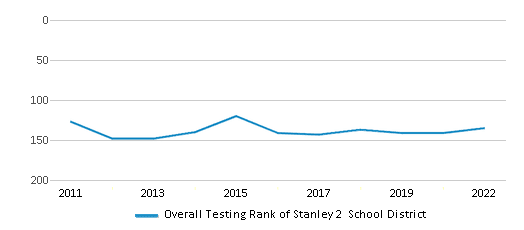
Math Test Scores (% Proficient)
29%
39%
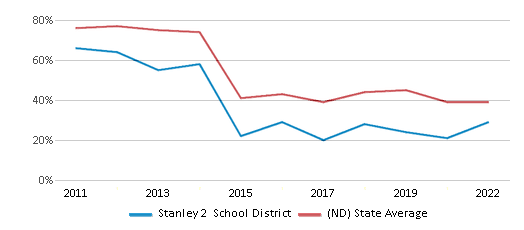
Reading/Language Arts Test Scores (% Proficient)
39%
44%
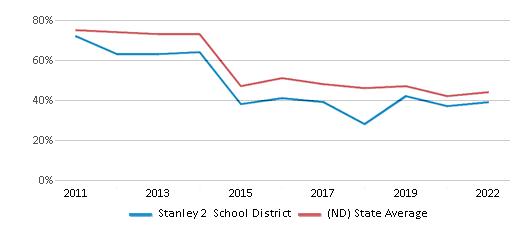
Science Test Scores (% Proficient)
40-44%
44%
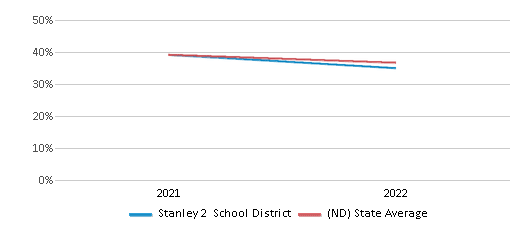
Graduation Rate
80-89%
85%

Students by Ethnicity:
Diversity Score
0.37
0.50
# American Indian Students
26 Students
9,178 Students
% American Indian Students
3%
11%
# Asian Students
5 Students
1,251 Students
% Asian Students
1%
1%
# Hispanic Students
104 Students
5,824 Students
% Hispanic Students
13%
7%
# Black Students
9 Students
4,615 Students
% Black Students
1%
6%
# White Students
609 Students
57,407 Students
% White Students
78%
70%
# Hawaiian Students
3 Students
274 Students
% Hawaiian Students
1%
n/a
# Two or more races Students
23 Students
4,019 Students
% of Two or more races Students
3%
5%
Students by Grade:
# Students in PK Grade:
12
2,144
# Students in K Grade:
64
8,683
# Students in 1st Grade:
69
9,525
# Students in 2nd Grade:
65
9,752
# Students in 3rd Grade:
66
9,340
# Students in 4th Grade:
51
9,408
# Students in 5th Grade:
67
9,314
# Students in 6th Grade:
53
9,461
# Students in 7th Grade:
56
6,981
# Students in 8th Grade:
63
7,005
# Students in 9th Grade:
70
277
# Students in 10th Grade:
51
255
# Students in 11th Grade:
45
222
# Students in 12th Grade:
47
201
# Ungraded Students:
-
-
District Revenue and Spending
The revenue/student of $17,406 in this school district is less than the state median of $17,615. The school district revenue/student has declined by 8% over four school years.
The school district's spending/student of $16,255 is less than the state median of $17,617. The school district spending/student has declined by 8% over four school years.
Total Revenue
$14 MM
$2,154 MM
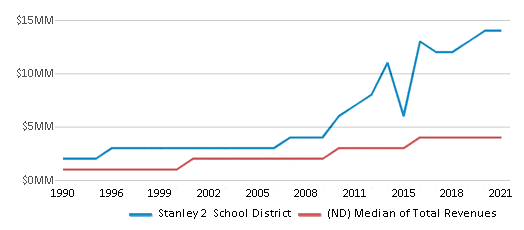
Spending
$13 MM
$2,154 MM
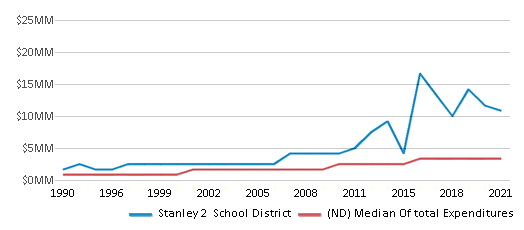
Revenue / Student
$17,406
$17,615
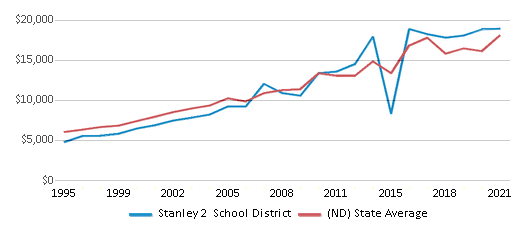
Spending / Student
$16,255
$17,617
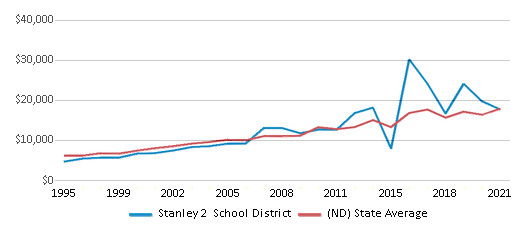
Best Stanley 2 School District Public Elementary Schools (2025)
School
(Math and Reading Proficiency)
(Math and Reading Proficiency)
Location
Grades
Students
Rank: #11.
Stanley Elementary School
(Math: 35% | Reading: 46%)
Rank:
Rank:
4/
Bottom 50%10
118 4th Ave Sw
Stanley, ND 58784
(701) 628-2422
Stanley, ND 58784
(701) 628-2422
Grades: PK-6
| 447 students
Recent Articles

Year-Round Or Traditional Schedule?
Which is more appropriate for your child? A year-round attendance schedule or traditional schedule? We look at the pros and cons.

Why You Should Encourage Your Child to Join a Sports Team
Participating in team sports has a great many benefits for children, there is no doubt. In this article you will learn what those benefits are.

White Students are Now the Minority in U.S. Public Schools
Increasing birth rates among immigrant families from Asia and Central and South America, combined with lower birth rates among white families, means that for the first time in history, public school students in the United States are majority-minority. This shift in demographics poses difficulties for schools as they work to accommodate children of varying language abilities and socio-economic backgrounds.





